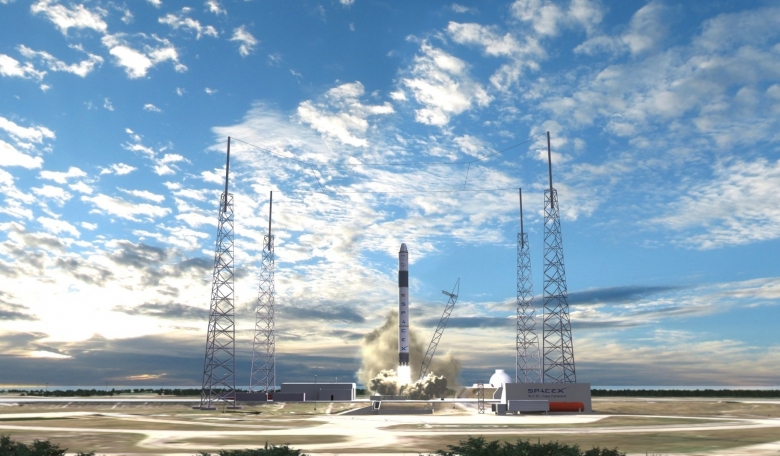The Dragon unmanned cargo ship is scheduled to launch on a Falcon 9 rocket to the International Space Station today, Monday August 14, at 1631 GMT, from Cape Canaveral, Florida. This will be the 12th trip for SpaceX. The Falcon 9 will attempt to land on solid ground about 10 minutes after launch.
The Dragon will carry 2,900 kilograms of supplies, including The Spaceborne Computer made by Hewlett Packard Enterprise. The computer could be used to direct astronauts on future deep-space missions. It will be tested in space for one year, roughly the same amount of time that it would take a crewed ship to get to Mars. The new super-computer aims to provide "sophisticated onboard computing resources that are capable of extended periods of uptime," said HPE senior vice president Alain Andreoli in a statement. Communication with Earth at long distances will have a lag of up to twenty-four minutes, which can be potentially dangerous for astronauts on Mars missions. “Such a long communication lag would make any on-the-ground exploration challenging and potentially dangerous if astronauts are met with any mission critical scenarios that they're not able to solve themselves”, said Andreoli.
Among other experiments planned is a study of Leucine-rich repeat kinase 2 (LRRK2) in zero gravity. LRRK2 is an important protein in Parkinson's disease and the study hopes to help scientists find better treatment for the disease. The project was developed by the Michael J. Fox Foundation. Some of the other experiments include a stem cell study for growing lung tissue and new equipment for growing vegetables in space.
The Falcon 9 will also launch the U.S. Army's Kestrel Eye electro-optical microsatellite. The Kestrel Eye, built by Adcole Maryland Aerospace, will provide satellite imagery via a data relay network, without the use of relays routed throughout the continental U.S. The satellite is meant to capture space-based tactical-level intelligence that will enable the U.S. army to make mission-command decisions on the move. If the satellite performs as planned, the army may launch dozens of similar satellites into low-Earth orbit.











